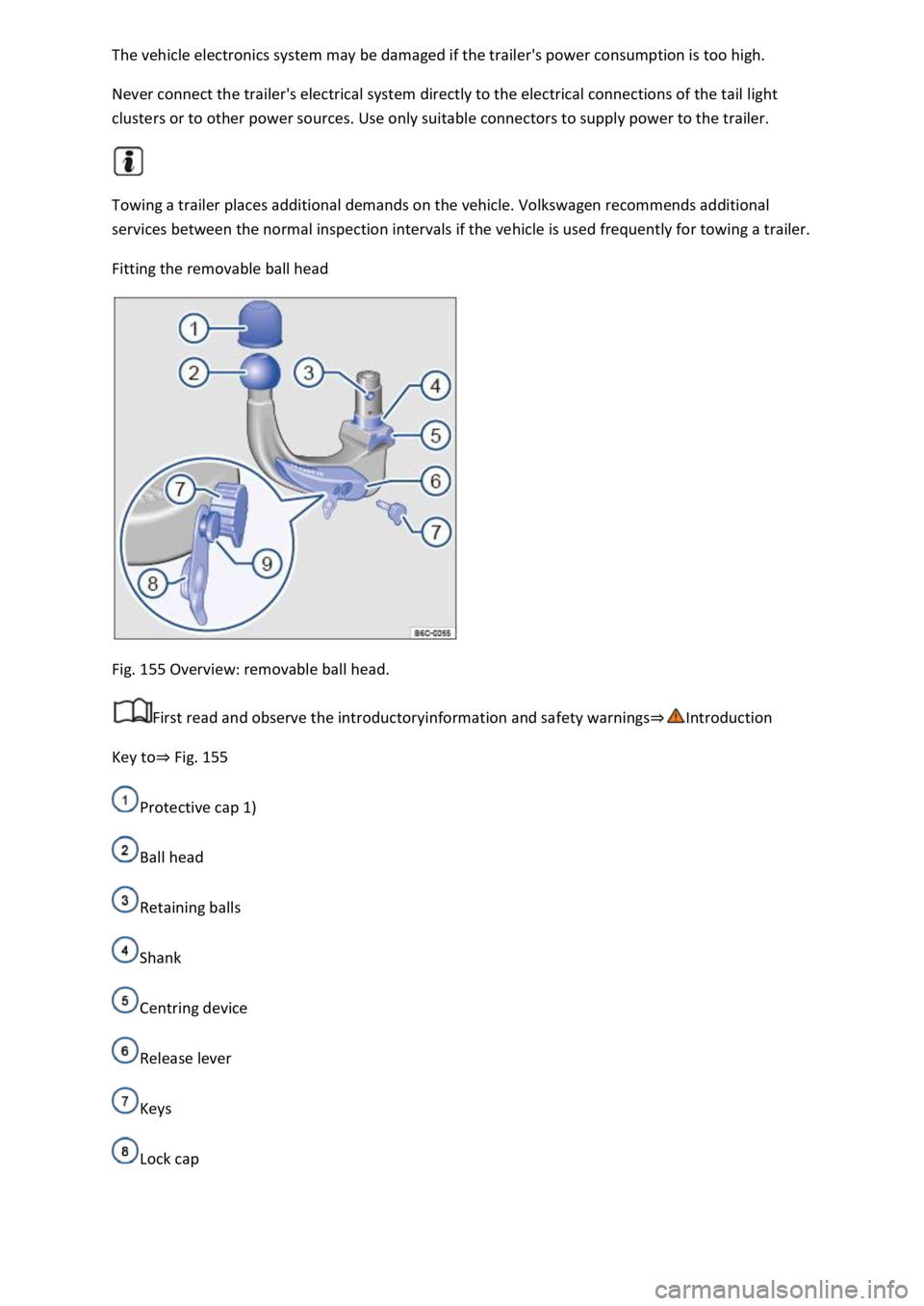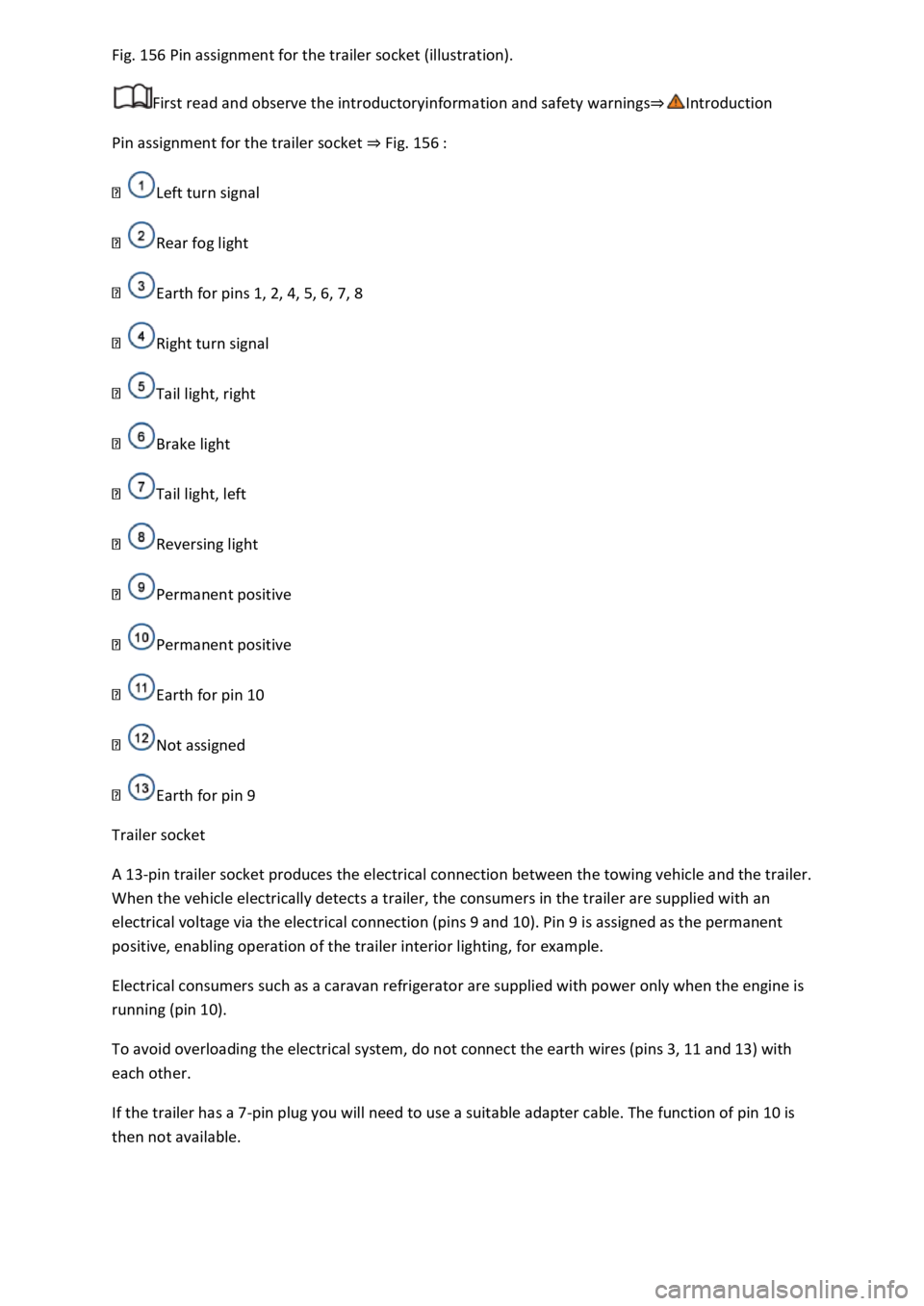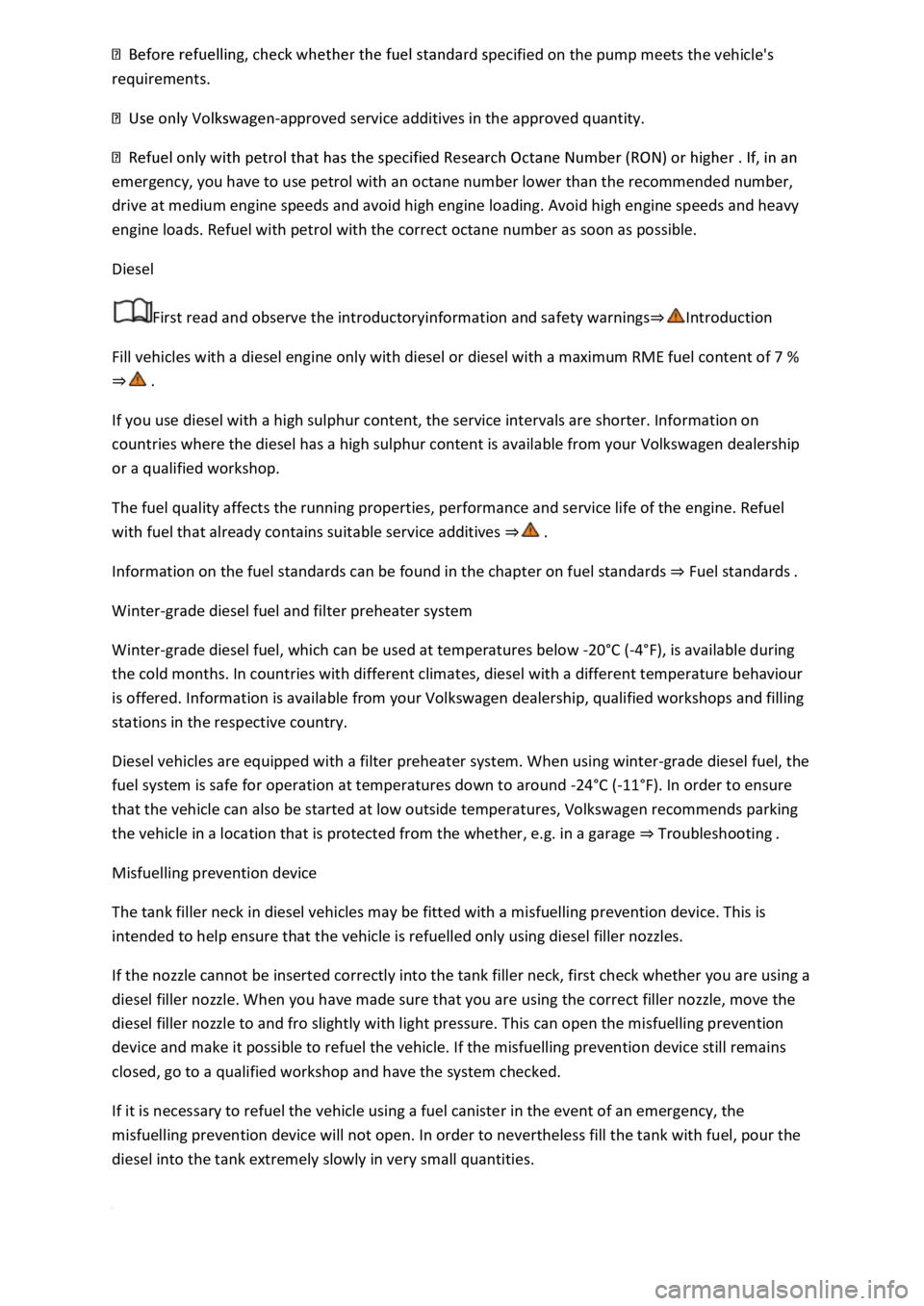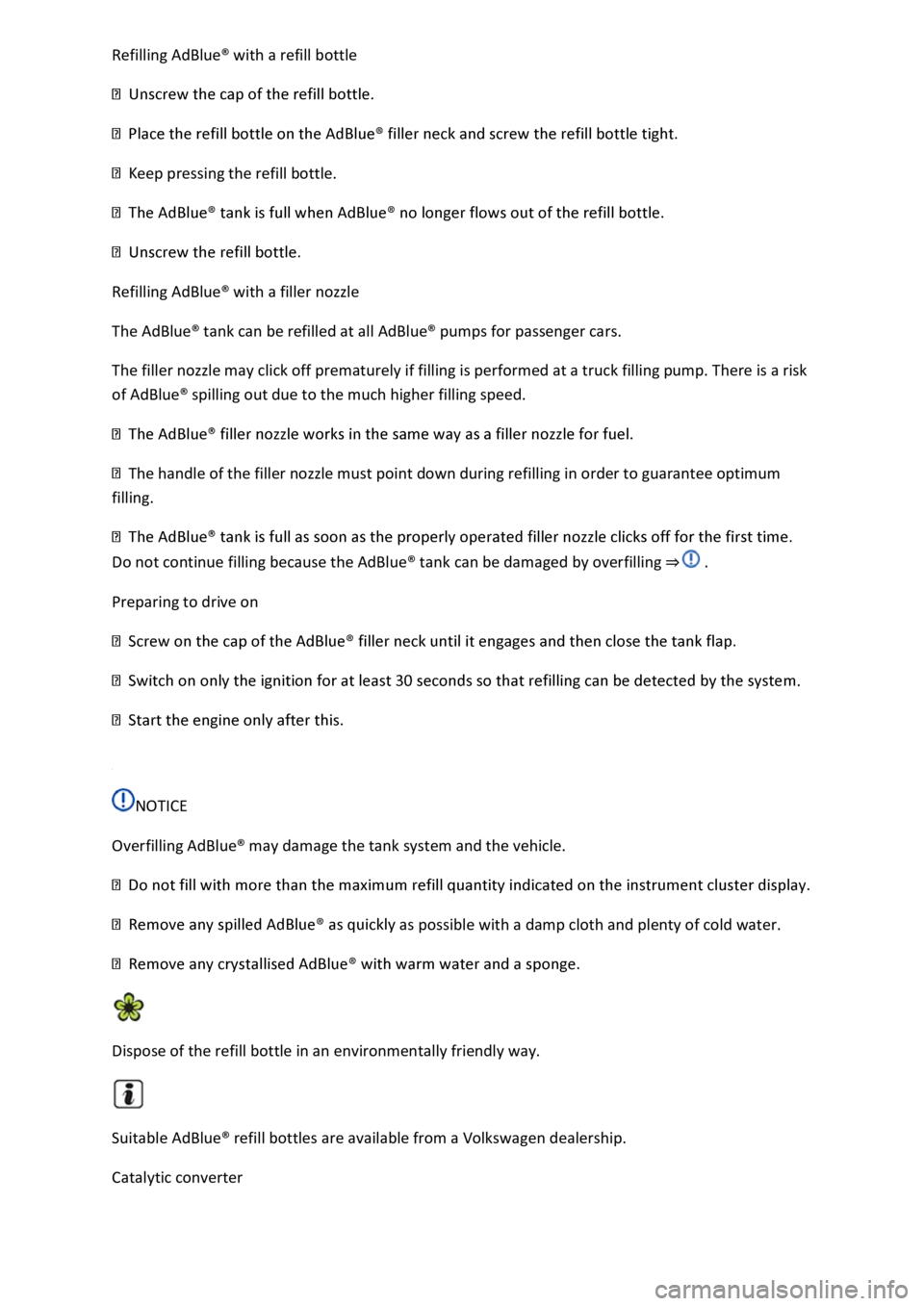2021 VOLKSWAGEN T-ROC Table
[x] Cancel search: TablePage 311 of 502

The vehicle electronics system may be damaged if the trailer's power consumption is too high.
Never connect the trailer's electrical system directly to the electrical connections of the tail light
clusters or to other power sources. Use only suitable connectors to supply power to the trailer.
Towing a trailer places additional demands on the vehicle. Volkswagen recommends additional
services between the normal inspection intervals if the vehicle is used frequently for towing a trailer.
Fitting the removable ball head
Fig. 155 Overview: removable ball head.
First read and observe the introductoryinformation and safety warnings⇒Introduction
Key to⇒ Fig. 155
Protective cap 1)
Ball head
Retaining balls
Shank
Centring device
Release lever
Keys
Lock cap
Page 315 of 502

Fig. 156 Pin assignment for the trailer socket (illustration).
First read and observe the introductoryinformation and safety warnings⇒Introduction
Pin assignment for the trailer socket ⇒ Fig. 156 :
Left turn signal
Rear fog light
Earth for pins 1, 2, 4, 5, 6, 7, 8
Right turn signal
Tail light, right
Brake light
Tail light, left
Reversing light
Permanent positive
Permanent positive
Earth for pin 10
Not assigned
Earth for pin 9
Trailer socket
A 13-pin trailer socket produces the electrical connection between the towing vehicle and the trailer.
When the vehicle electrically detects a trailer, the consumers in the trailer are supplied with an
electrical voltage via the electrical connection (pins 9 and 10). Pin 9 is assigned as the permanent
positive, enabling operation of the trailer interior lighting, for example.
Electrical consumers such as a caravan refrigerator are supplied with power only when the engine is
running (pin 10).
To avoid overloading the electrical system, do not connect the earth wires (pins 3, 11 and 13) with
each other.
If the trailer has a 7-pin plug you will need to use a suitable adapter cable. The function of pin 10 is
then not available.
Page 317 of 502

If you park the trailer using the support wheel or other trailer supports, the trailer must be
unhitched from the vehicle. The vehicle could move up and down if the load changes or if there is
damage to the tyres, for example. If this happens, a great deal of force will be exerted on the towing
bracket and trailer, which could lead to damage to the vehicle and trailer.
If there is a fault in the vehicle or trailer electrical systems or in the anti-theft alarm, have the vehicle
checked by a qualified workshop.
If the 12-volt vehicle battery charge level is low, the electrical connection to the trailer will be
interrupted automatically.
Loading the trailer
First read and observe the introductoryinformation and safety warnings⇒Introduction
Trailer weight and drawbar load
The trailer weight is the weight that the vehicle can pull ⇒ .
The drawbar load is the load that is exerted vertically from above onto the ball head of the towing
bracket.
The figures for trailer weights and drawbar weights that are given on the data plate of the towing
bracket are for certification purposes only. The correct values for your specific model, which may be
lower than these figures, are given in the vehicle registration documents. All data in the official
vehicle documents take precedence over these data.
The maximum permitted drawbar load exerted by the trailer drawbar on the ball head of the towing
bracket must not exceed 80 kg.
In the interest of driving safety, Volkswagen recommends that you always use the maximum
drawbar load. The handling of the vehicle combination will be impaired if the drawbar load is too
low.
The drawbar load increases the weight on the rear axle and reduces the maximum payload of the
vehicle as a result.
Gross combination weight
The gross combination weight is made up of the actual weight of the loaded vehicle and of the
loaded trailer.
In some countries, trailers are divided into different classes. Volkswagen recommends that you
contact a qualified workshop to find out about suitable trailers.
Loading the trailer
The weight of the load should be distributed evenly. The maximum permitted drawbar load should
be utilised. Do not place the load only at the front or the rear of the trailer:
Page 318 of 502

possible.
Tyre pressure
Follow the trailer manufacturer's recommendations concerning the tyre pressure for the trailer
tyres.
When towing a trailer, inflate the wheels on the towing vehicle with the maximum permitted tyre
pressure ⇒ Tyre pressure .
WARNING
Accidents and serious injuries can occur if you exceed the vehicle's maximum permitted gross axle
weight rating, drawbar load, gross vehicle weight rating or gross combination weight rating.
exceed the permissible gross vehicle weight for the vehicle with weight at the front and rear of the
vehicle.
WARNING
Loads that may slide can severely impair stability and driving safety, which can cause accidents and
severe injuries.
secure loads using suitable and undamaged lashing, retaining or securing straps.
Driving with a trailer
First read and observe the introductoryinformation and safety warnings⇒Introduction
Headlight adjustment
Towing a trailer can raise the front end of the vehicle enough for the dipped beam to dazzle other
road users. Use the headlight range control to lower the light cone as required. Vehicles with
dynamic headlight range control are adjusted automatically.
Things to note when driving with a trailer
If the trailer has an overrun brake, apply the brakes gently at first and then firmly. This will
prevent the jerking that can be caused by the trailer wheels locking.
Page 322 of 502

Mounting points
879 mm
at least 65 mm
350 – 420 mm
334 mm
554 mm
1,017 mm
1,051 mm
WARNING
Electrical cables that are not connected properly or are connected incorrectly can cause faults in the
entire vehicle electronics system and also cause accidents and serious injuries.
clusters or to other unsuitable power sources. Use only suitable connectors for connection of the
trailer.
WARNING
The trailer can become detached from the towing vehicle if the towing bracket is unsuitable or
incorrectly fitted. This can cause serious accidents and fatal injuries.
Use only towing brackets which have been approved by Volkswagen for your vehicle type.
Fuel and emission control
Safety notes on handling fuel
WARNING
Incorrect handling of fuel can cause explosions, fire, serious burns and other injuries.
⇒ Switching the auxiliary heater and ventilation on and
off , the ignition, your mobile phone and other radio equipment before refuelling.
Page 324 of 502

Information on warning and indicator lamps that light up can be found in the section
Troubleshooting ⇒ Troubleshooting .
Fuel standards
First read and observe the introductoryinformation and safety warnings⇒Introduction
Petrol
EN 228
DIN 51626-1
Diesel
EN 590
EN 590
Where fuel complying with the specified standard is not available, your Volkswagen dealership or a
qualified workshop will have information on which available fuels are suitable for the vehicle.
NOTICE
Using fuel that does not comply with these standards may reduce performance and cause damage to
the engine and fuel system.
and engine failure.
Petrol
First read and observe the introductoryinformation and safety warnings⇒Introduction
Fill vehicles with a petrol engine only with unleaded petrol or petrol with a maximum ethanol
content of 10 % (E10) ⇒ .
Fuel grades differ according to the octane number. The vehicle may be filled with petrol that has a
higher octane number than the engine requires. However, this does not provide any advantage in
terms of fuel consumption or engine output.
The fuel quality affects the running properties, performance and service life of the engine. Refuel
with fuel that already contains suitable service additives ⇒ .
Information on the fuel standards can be found in the chapter on fuel standards ⇒ Fuel standards .
NOTICE
Errors during refuelling or unsuitable fuel additives may cause damage to the vehicle.
Page 325 of 502

pecified on the pump meets the vehicle's
requirements.
-approved service additives in the approved quantity.
emergency, you have to use petrol with an octane number lower than the recommended number,
drive at medium engine speeds and avoid high engine loading. Avoid high engine speeds and heavy
engine loads. Refuel with petrol with the correct octane number as soon as possible.
Diesel
First read and observe the introductoryinformation and safety warnings⇒Introduction
Fill vehicles with a diesel engine only with diesel or diesel with a maximum RME fuel content of 7 %
⇒ .
If you use diesel with a high sulphur content, the service intervals are shorter. Information on
countries where the diesel has a high sulphur content is available from your Volkswagen dealership
or a qualified workshop.
The fuel quality affects the running properties, performance and service life of the engine. Refuel
with fuel that already contains suitable service additives ⇒ .
Information on the fuel standards can be found in the chapter on fuel standards ⇒ Fuel standards .
Winter-grade diesel fuel and filter preheater system
Winter-grade diesel fuel, which can be used at temperatures below -20°C (-4°F), is available during
the cold months. In countries with different climates, diesel with a different temperature behaviour
is offered. Information is available from your Volkswagen dealership, qualified workshops and filling
stations in the respective country.
Diesel vehicles are equipped with a filter preheater system. When using winter-grade diesel fuel, the
fuel system is safe for operation at temperatures down to around -24°C (-11°F). In order to ensure
that the vehicle can also be started at low outside temperatures, Volkswagen recommends parking
the vehicle in a location that is protected from the whether, e.g. in a garage ⇒ Troubleshooting .
Misfuelling prevention device
The tank filler neck in diesel vehicles may be fitted with a misfuelling prevention device. This is
intended to help ensure that the vehicle is refuelled only using diesel filler nozzles.
If the nozzle cannot be inserted correctly into the tank filler neck, first check whether you are using a
diesel filler nozzle. When you have made sure that you are using the correct filler nozzle, move the
diesel filler nozzle to and fro slightly with light pressure. This can open the misfuelling prevention
device and make it possible to refuel the vehicle. If the misfuelling prevention device still remains
closed, go to a qualified workshop and have the system checked.
If it is necessary to refuel the vehicle using a fuel canister in the event of an emergency, the
misfuelling prevention device will not open. In order to nevertheless fill the tank with fuel, pour the
diesel into the tank extremely slowly in very small quantities.
Page 330 of 502

Refilling AdBlue® with a refill bottle
eep pressing the refill bottle.
Refilling AdBlue® with a filler nozzle
The AdBlue® tank can be refilled at all AdBlue® pumps for passenger cars.
The filler nozzle may click off prematurely if filling is performed at a truck filling pump. There is a risk
of AdBlue® spilling out due to the much higher filling speed.
The handle of the filler nozzle must point down during refilling in order to guarantee optimum
filling.
Do not continue filling because the AdBlue® tank can be damaged by overfilling ⇒ .
Preparing to drive on
.
NOTICE
Overfilling AdBlue® may damage the tank system and the vehicle.
as possible with a damp cloth and plenty of cold water.
Dispose of the refill bottle in an environmentally friendly way.
Suitable AdBlue® refill bottles are available from a Volkswagen dealership.
Catalytic converter